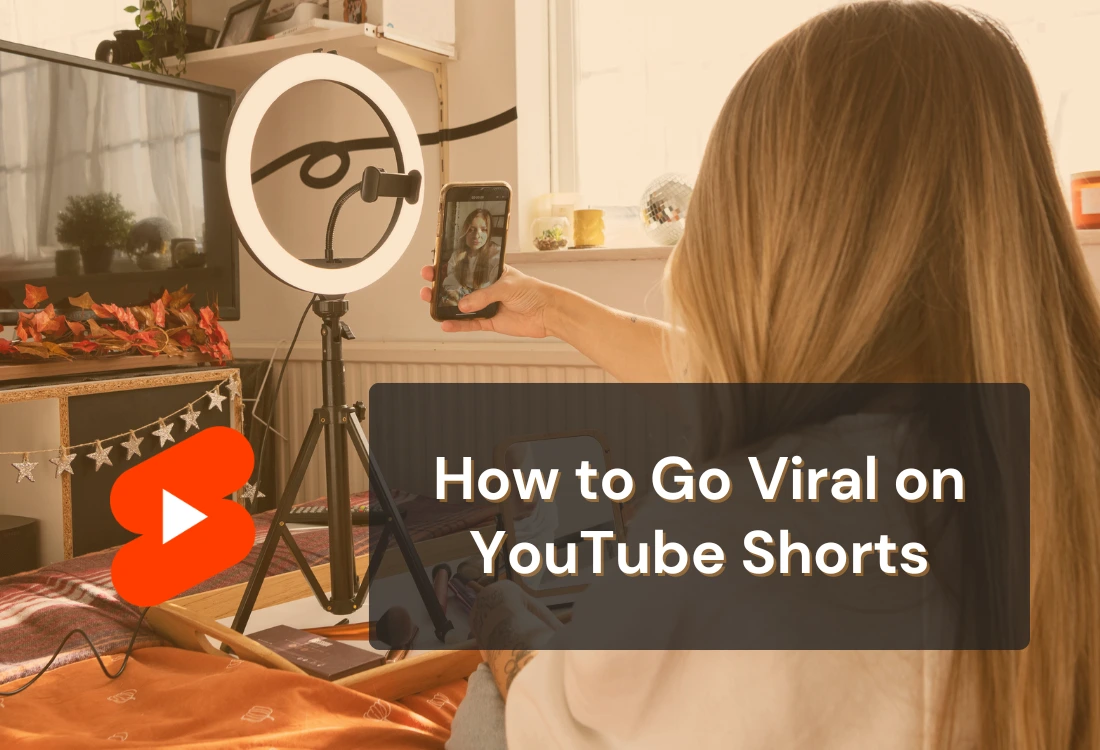



YouTube Shorts is no longer a sidekick to long-form video. It's a major traffic driver, a discovery machine, and for many creators, a fast track to building an audience. But with millions of Shorts uploaded daily, getting traction isn't just about hitting record and hoping for the best.
To achieve viral success on YouTube Shorts, a strategic approach, regular posting, and knowledge of the algorithm are essential. Explore these tactics and intelligent content strategies to transform your next 15-second video into a viral success.

The Shorts algorithm is designed to reward engagement. Rather than focusing on titles or thumbnails like long-form videos, Shorts gain momentum through how viewers interact with them. Specifically:
According to YouTube's Todd Sherman, retention and replays are the strongest indicators of a Short’s success. This means creators need to focus more on story construction and pacing than traditional metadata tactics.
Unlike long-form content, which relies on optimization and search discovery, Shorts live and die by their in-feed performance. They appear in a vertically scrolling interface where viewers judge based solely on the first frame. This means:
For creators accustomed to traditional YouTube strategies, this shift in content delivery means adapting both creative mindset and workflow.
YouTube Shorts offers almost no runway. Audiences scrolling the feed decide within seconds whether to engage or skip. That’s why your opening few seconds must do the heavy lifting. This brief window is your make-or-break moment.
Effective hook strategies:
Just like headlines drive clicks, the first frame drives retention. Treat your opening like the climax, not the build-up.
Looping creates a hypnotic effect, where the end and beginning blend seamlessly. Viewers often rewatch without realizing it, doubling your watch time without doubling effort. This elevated watch time sends strong signals to YouTube’s algorithm.
Loop-friendly formats include:
Great loopable Shorts also manipulate music loops or timing to reset intuitively, creating a continuous experience.

In a world of passive scrolling, CTAs nudge your audience to engage. Every like, comment, or share adds weight to the algorithm’s evaluation.
Best practices for CTAs:
These calls can be delivered verbally or through text overlays. Keep them organic and relevant to the video.
Micro-storytelling is one of the most potent formats for viral Shorts. Even within 15 seconds, a well-crafted narrative can evoke emotion and encourage viewers to engage.
Micro-story framework:
This format encourages emotional connection. Story-driven content taps into human curiosity, which naturally increases retention and shares.
Planning a compact story arc often requires precision. Using a teleprompter app allows you to map out your micro-story, rehearse pacing, and keep your timing within the 15–60 second limit—all while maintaining flow and clarity. Streamline your story delivery—sign up free at Teleprompter.com.
Short creators like Khaby Lame shine by building stories without needing dialogue, relying entirely on visual cues and expressions.
Trends give your Shorts a head start. If YouTube sees viewers interacting with a particular sound or format, it’ll often promote new content using that same asset. But trends without originality fall flat.
Identifying trends:
Ways to stand out:
Trends are tools, not content replacements. Always use them to highlight your voice, not mask it.

YouTube favors channels that show up often. Consistent posting helps with audience growth and data collection. More uploads mean more signals to understand what works. Publishing Shorts 3-5 times per week increases visibility and gives the algorithm more data to understand what works.
Actionable planning tips:
Don’t just rely on intuition. YouTube’s analytics can show what part of your video caused drops or spikes.
Metrics that matter:
Short-form success is often found in small improvements. Use data to guide better openings, tighter edits, and sharper storylines.
Collaboration adds credibility and introduces you to new audiences. You don’t need massive creators to collaborate—similar-sized or slightly larger accounts are often open to mutual growth.
Collab strategies:
Cross-promotion tips:
Think beyond YouTube for growth, but use YouTube as the anchor.
Cracking how to go viral on YouTube Shorts takes more than random uploads. It requires intentionality, smart use of platform features, and creativity tailored for brevity.
Each Short is an opportunity. Focus on making each one slightly better than the last, and you’ll steadily improve your chances of reaching a wider audience.



